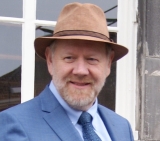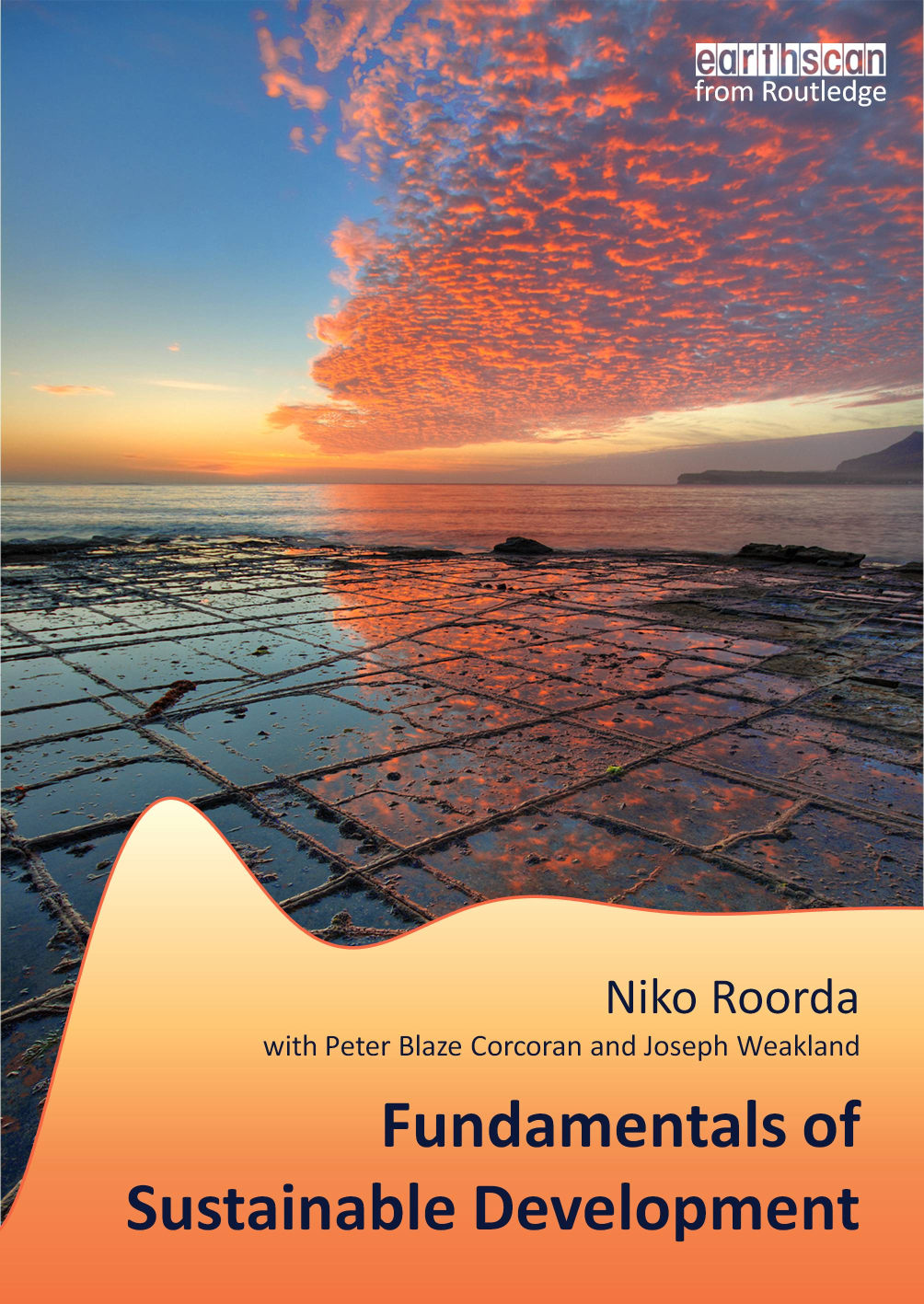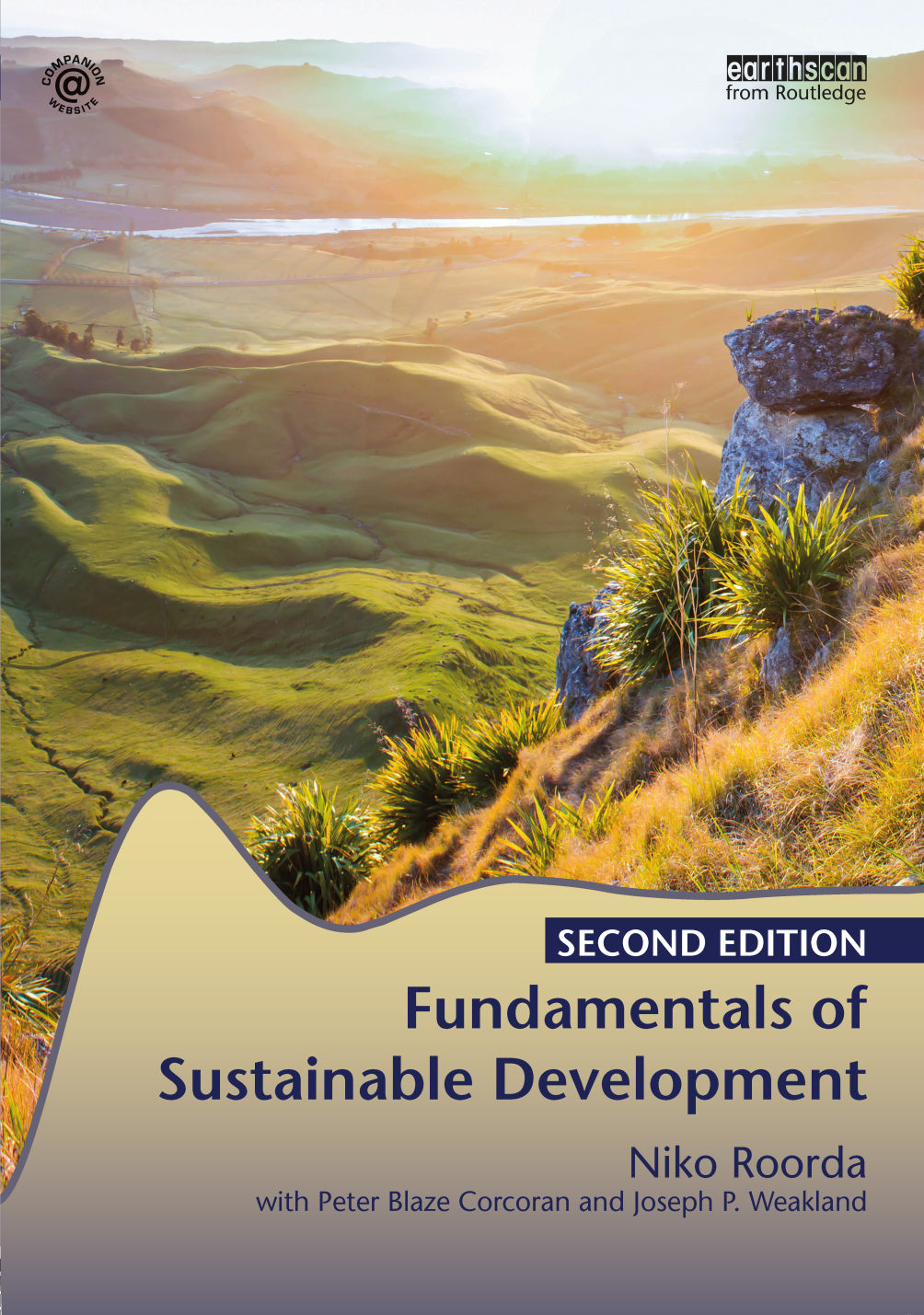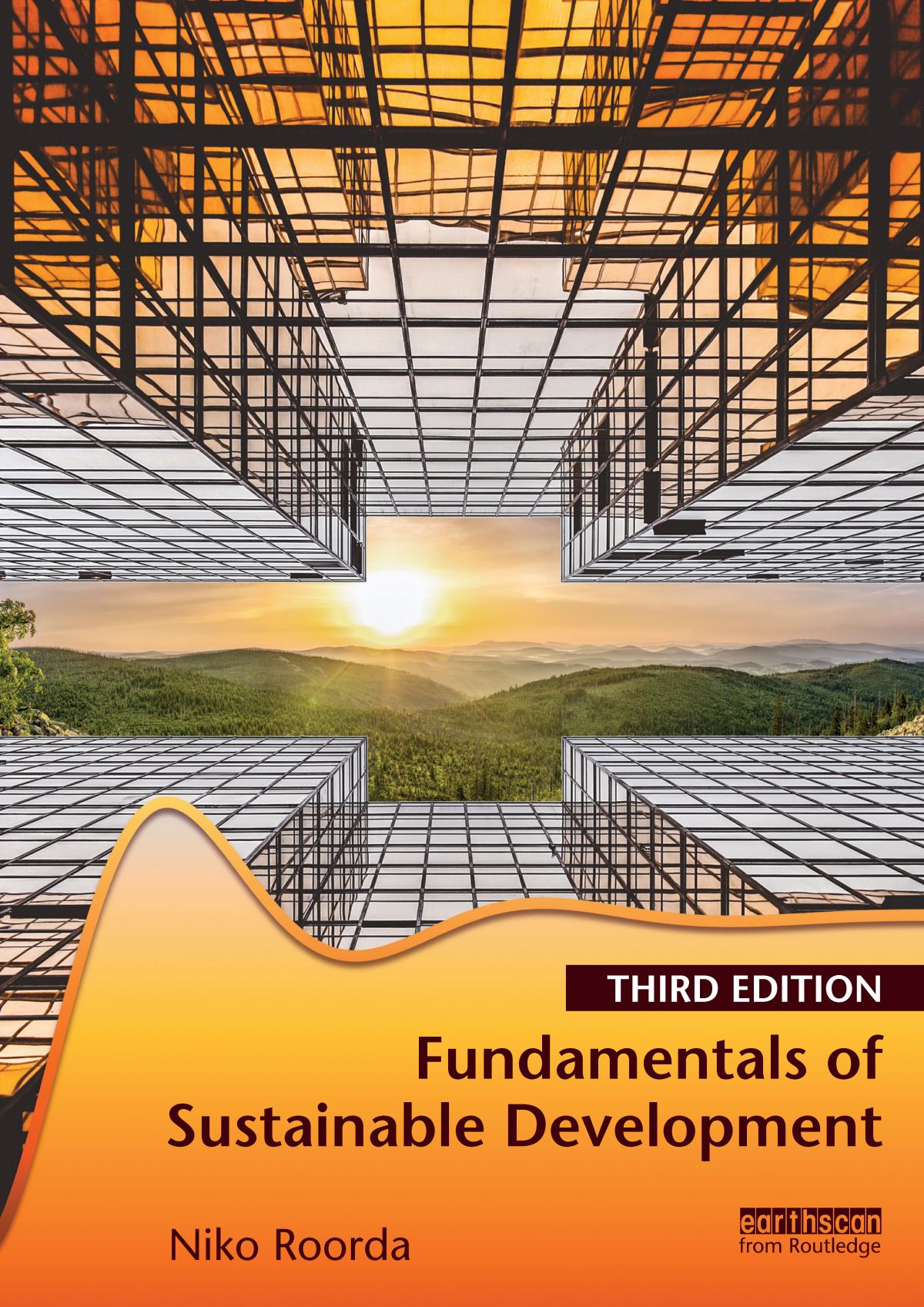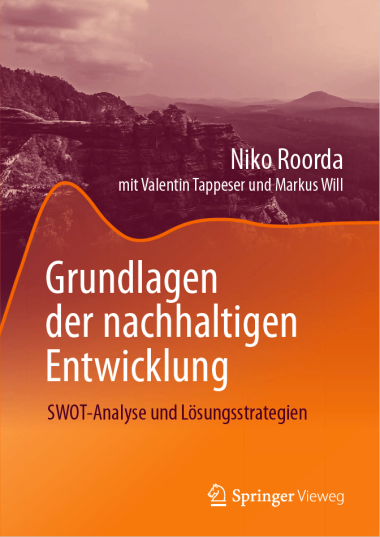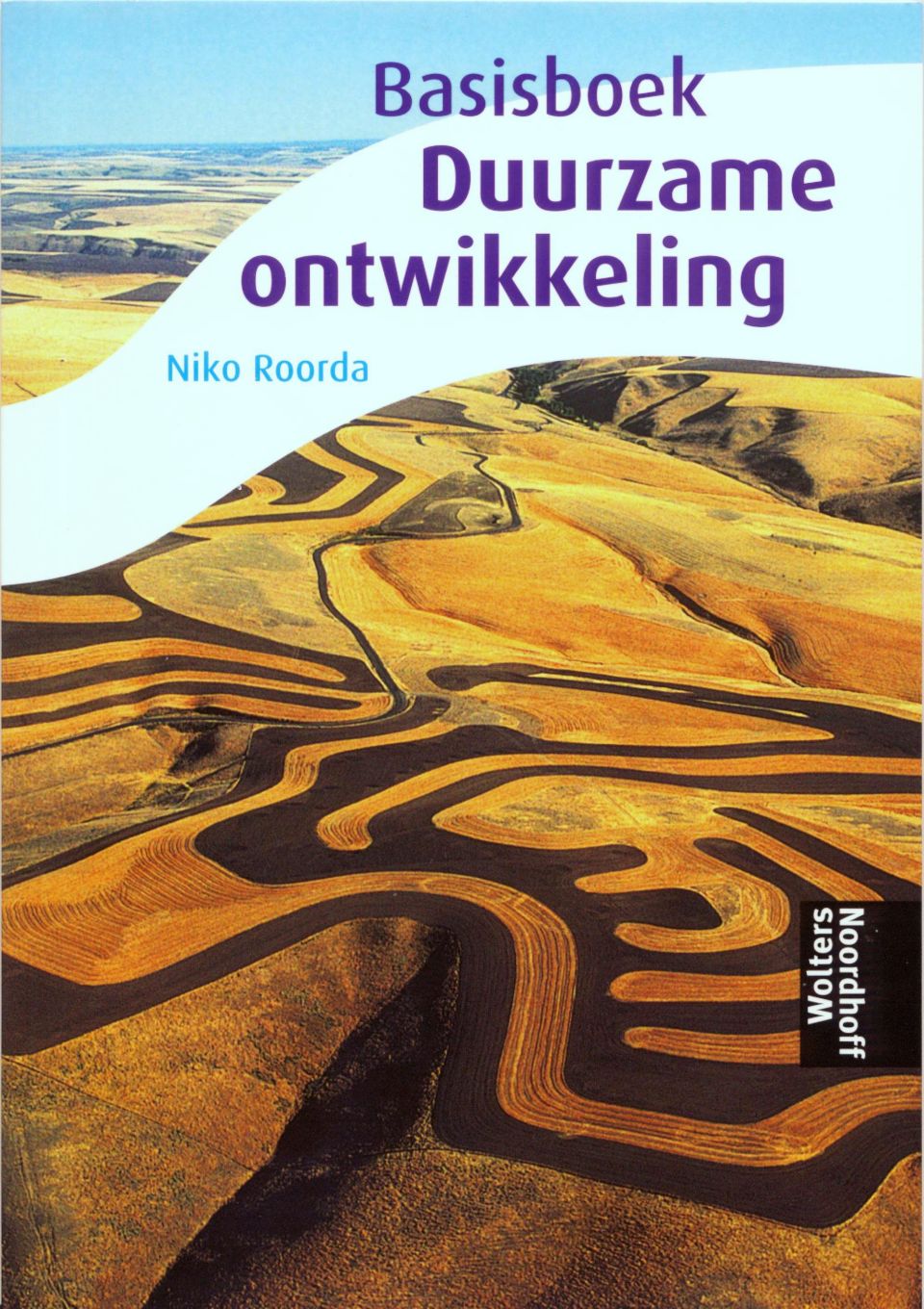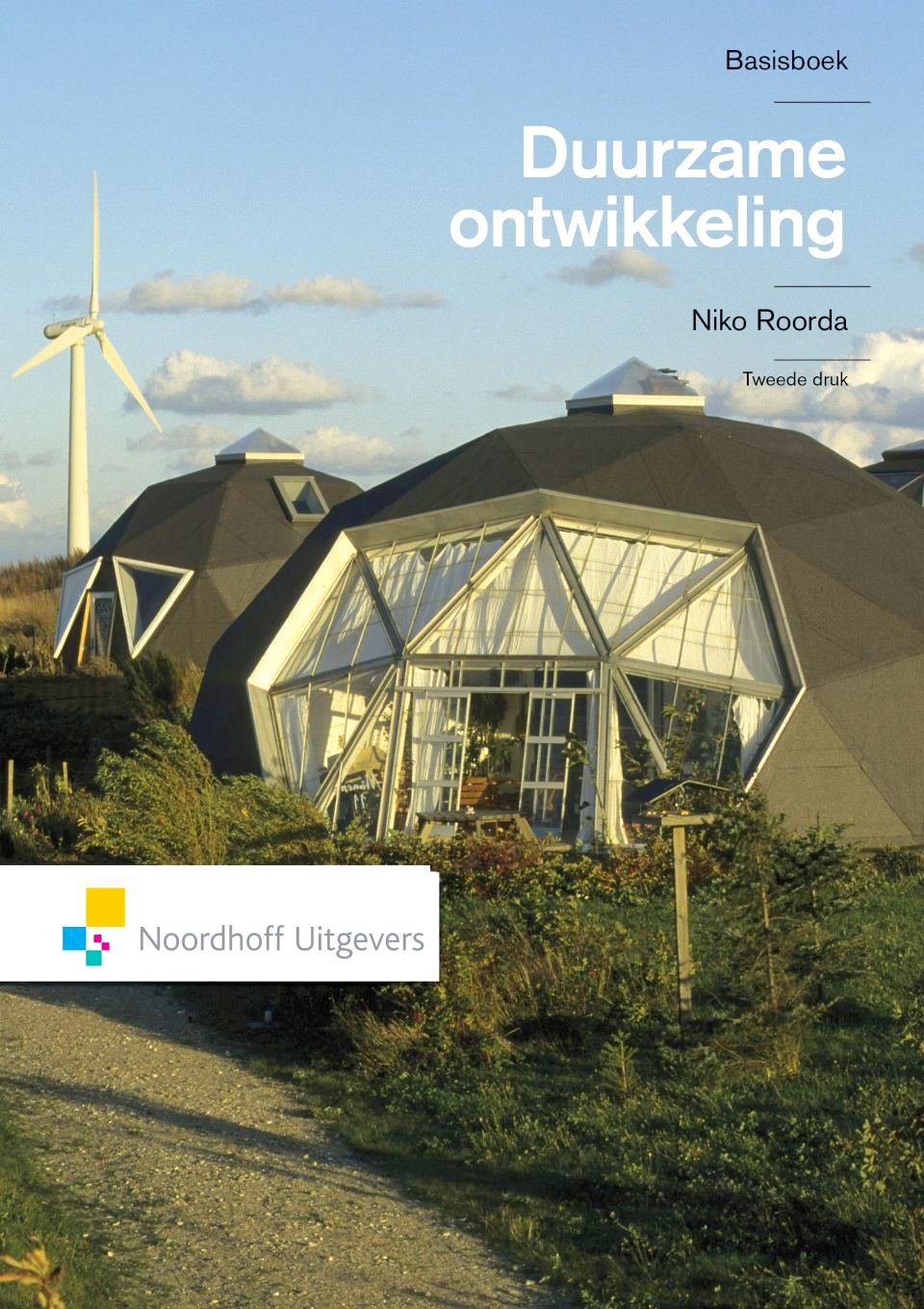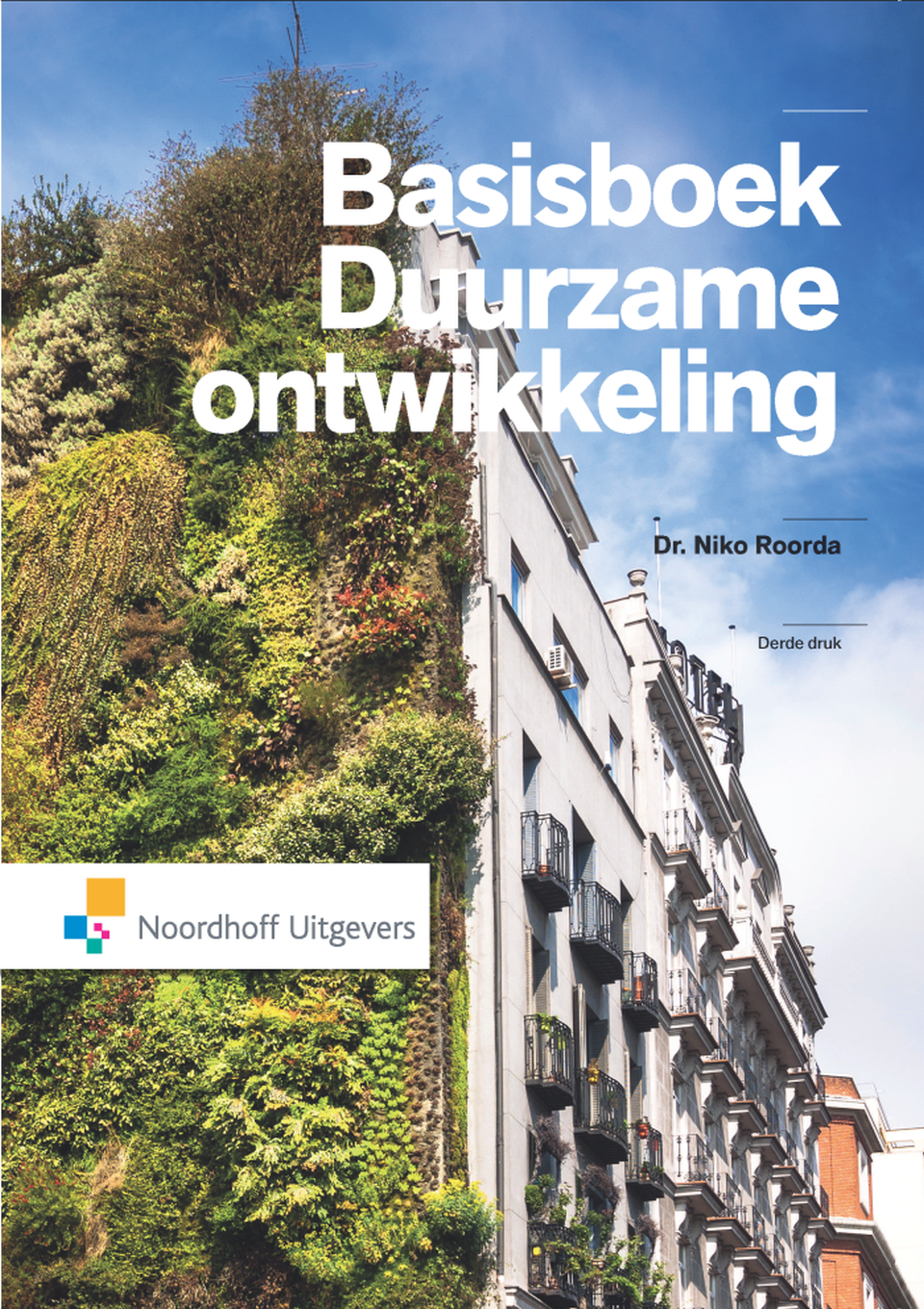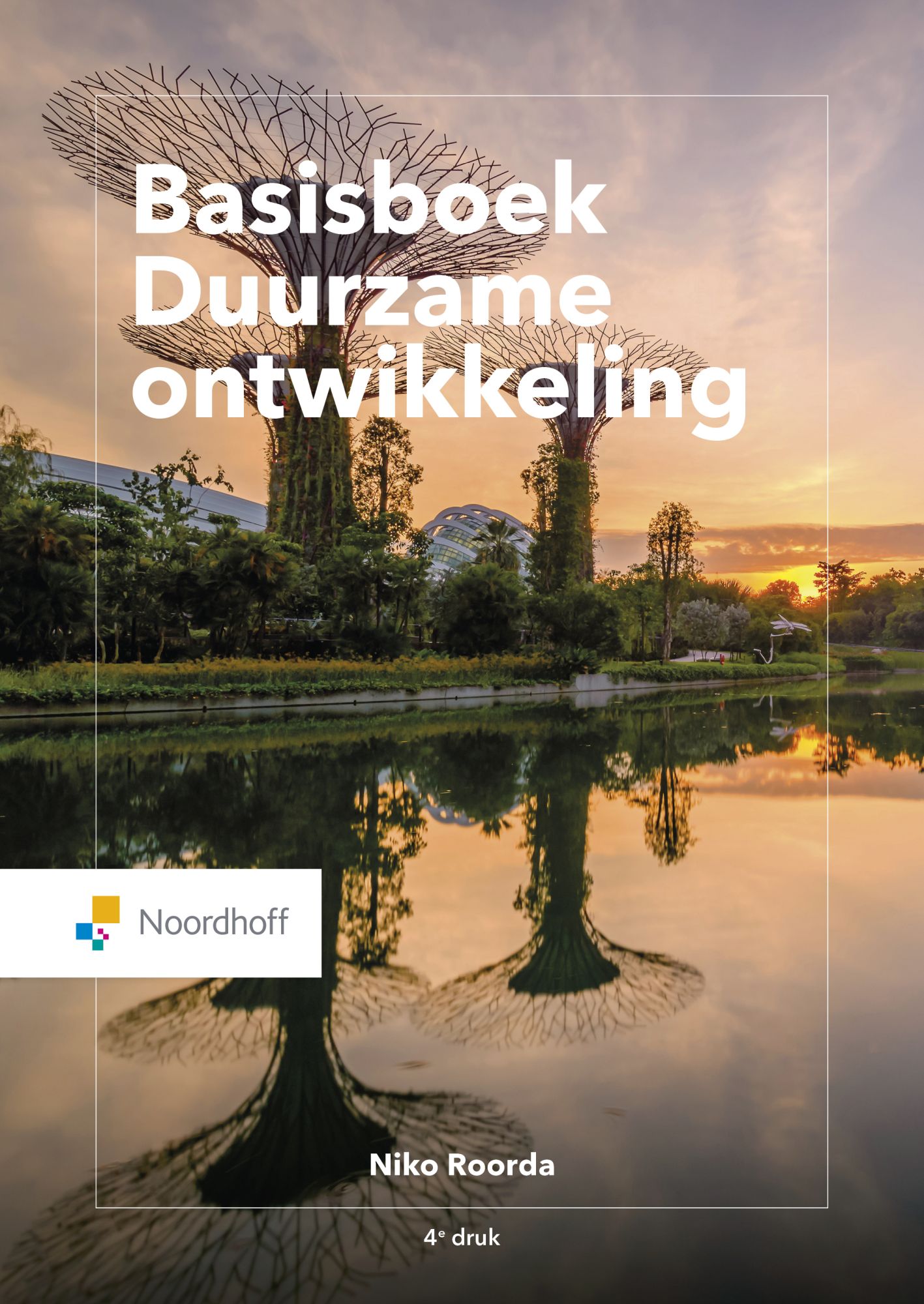Introduction to the 4th edition, 2025 By Niko Roorda, author of Fundamentals of Sustainable Development, 4th Edition, 2025 > See also: Basisboek Duurzame Ontwikkeling, 5th edition, 2025; |
This book is entirely newly written in its three languages, although it bears the title of its predecessors from 2005 onwards: in English Fundamentals of Sustainable Development, in Dutch Basisboek Duurzame Ontwikkeling, and in German Grundlagen der nachhaltigen Entwicklung. The previous editions were updated every five years, which was always much needed, because the world is developing fast. But after 20 years, such an update is no longer good enough; too much has happened in the meantime.
1st English edition, 2012 |
2nd edition, 2015 |
3rd edition, 2021 |
1st German edition, 2021 |
2003: Inventing the wheel
I started working on the first Dutch edition in 2003, when I travelled around dozens of universities and colleges of higher education as a consultant on behalf of the Stichting Duurzaam Hoger Onderwijs, the Dutch Foundation for Sustainable Higher Education. Everywhere I went, lecturers, managers and administrators asked me: What exactly is sustainable development; why should we do something with it in our education? And also: Isn't there a textbook that clearly explains everything? There was no such book, I concluded after careful research, at least not in English, German or Dutch. And so I started writing it. I had no examples, I had to 'invent the wheel’ all by myself, but fortunately I had the support and advice of more than a hundred and twenty experts, teachers, students, administrators and representatives of civil society organisations. (Continued below the images.)
1st Dutch edition, 2005 |
2nd Dutch edition, 2010 |
3rd Dutch edition, 2015 |
4th Dutch edition, 2020 |
Now, in 2025, I no longer get such questions, because everything is different. In two decades, sustainability has deeply penetrated the roots of society, and that is a good thing. Courses without sustainability are hard to find anymore: universities and higher and secondary vocational education have taken their social mission seriously, as have companies, governments and media. Many of them use the SDGs, the Sustainable Development Goals, as their guideline. When the first three editions of my textbook were written, they did not even exist; in this new edition, they take a leading role. A less favourable development is that climate change, natural degradation and other forms of deterioration, already described in the first edition in 2005, have now become fully visible and are increasingly severe.
RESFIA+D: Competences for Sustainable Development I myself have also continued to develop in the meantime. In 2010, I obtained my PhD with a doctoral thesis on the combination of sustainability, higher education and organisational development. Afterwards, I did more research, developed new management and teaching methods and published books and articles, including a model for competences of sustainable professionals: RESFIA+D. In the new book, the model plays an important role: almost every chapter features topics that call for certain competences of professionals. In such places, alongside the text, the relevant competence is shown by means of a QR code with a special layout, like the one pictured here. The concluding chapter describes RESFIA+D in detail and allows readers to examine their own sustainability competences.
I myself have also continued to develop in the meantime. In 2010, I obtained my PhD with a doctoral thesis on the combination of sustainability, higher education and organisational development. Afterwards, I did more research, developed new management and teaching methods and published books and articles, including a model for competences of sustainable professionals: RESFIA+D. In the new book, the model plays an important role: almost every chapter features topics that call for certain competences of professionals. In such places, alongside the text, the relevant competence is shown by means of a QR code with a special layout, like the one pictured here. The concluding chapter describes RESFIA+D in detail and allows readers to examine their own sustainability competences.
The textbook: source of science. Bibliography: also available online.
In the course of the past 20 years, it turned out that the book, especially the English editions, is used not only as a textbook in education but, in addition, increasingly as literature for academic research and publications in more than 50 countries. In connection with this, the book refers to a sizeable number of literature sources. In the current edition, the List of References is not only available in the book itself, but also online, which is very useful as it contains close to a thousand hyperlinks.
A new narrative
Through these and other new books and articles I wrote in the meantime, plus the feedback I received on my textbook for years, my ideas as an author about what makes a good textbook also evolved. When the various publishers asked me for a new edition in 2022, it was immediately clear that the usual update would not be good enough this time. The narrative had to be rewritten from cover to cover. That was a big job, and so in 2022 I started with an exploration and a first draft, from which the current book emerged three years later. Over the course of those three years, even up to the last minute, current developments were tracked and the book is up-to-date.
New in this edition
Whereas the previous editions placed a relatively strong emphasis on the Netherlands, for instance in the choice of cases, the new book, which is again published in three languages and used all over the world, is now completely international. Of course, the Netherlands occasionally features in it, as do numerous other countries.
As mentioned, the number of literature sources has increased considerably, which has become all the more important in these days of 'alternative facts'. Explicit attention is paid to the value of scientific evidence.
As a counterpart, more attention is also paid to readers' perceptions and emotions than before. Opportunities and threats are discussed. The book addresses fear: there are so many bad news reports, will we survive? And it deals with hope and energy: what can I do to tackle the problems?
Philosophical topics are also getting more space. The advent of the Anthropocene raises questions such as: what is the position of humans in today's world; what can, may or should we as humans do or not do? Who are we? The discussions about these in this book not only contribute to knowledge and understanding about sustainable development, but also help the reader to develop a personal vision in a rapidly evolving world, and to contribute to that evolution in a balanced and inspired way: as a human and as a professional.
Gratitude
As author, I am grateful for the enthusiastic and valuable efforts of the more than 100 people who have, over the years, contributed directly or indirectly to the production of this book, in its three language editions, including all previous editions over the past 20-plus years.
My special thanks go to the three publishers of today: Grace Harrison (Routledge Publishers, for the English edition); Michael Kottusch (Springer Nature, for the German edition); and, above all, Vincent Diks (Uitgeverij Noordhoff, for the Dutch edition), who provided me with constant guidance and support throughout the writing and publishing process, now for several editions, even when I was not always that easy to handle.
I also thank editor Lia Hesemans for her guidance and feedback; Ab Helderman and Kees Uittenhout, who also provided invaluable feedback; and Esther Parigger, Marije van Gent, Willemijn Vermeer and Geert Seeters, who contributed with inspiring ideas, which have influenced the book.
Furthermore, I thank Indian architect Manas Bhatia warmly for his immediate willingness to make available several of his beautiful designs.
My greatest thanks are for my wife Marjo van Giersbergen-Roorda, who constantly supported and encouraged me during the three years of the extraordinarily intensive development and writing process of what is likely to be my last major production, and provided all texts and images with careful feedback, often several times. Thanks partly to her, I end my career, dedicated to my sustainability mission, with a book I dare to be proud of. Marjo: thank you.
Niko Roorda
Netherlands: Sprang-Capelle
